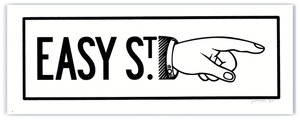The inspiration for this post is the soaring San Francisco dining room of designer Steven Volpe, which just so happens to be the cover for the September 2011 issue of Elle Decor.
This example shows the versatility of free-standing bookcases. It also points out the fact that you don't necessarily want to build in shelving if the conditions can't accommodate it. In this case, the metal shelves from Martin Szekely fit beautifully between the rough-hewn pilasters and play off the vibe of the vintage chairs and modern custom table with metal legs.
Bookcases don't necessary have to stand on the floor to function well and look beautiful.
This example from Virginia McDonald in House and Home has the same vintage modern aesthetic as the Volpe room, above. But without the soaring vertical proportions, the wall-mounted horizontal shelving makes a lovely sculptural statement in addition to handy storage for books, without interrupting the clean lines of the fireplace.
Sometimes, however, you just want a wall of books. The boxy cubbies formed by these store-bought bookcases in a room by Tracy Garret Design, also shown in House and Home, offer lots of opportunities for displaying a variety of objects alongside books of various sizes. The repetition of the openings makes it look orderly rather than a haphazard jumble.
Many types of case goods accommodate books. I think it's time to resurrect the poor TV armoire, this time as a cabinet for books, wine, table linens, or what have you. These examples from Rue magazine show creative use of vintage cabinets that could be picked up at just about any corner antique or consignment shop.
If you don't want to go the vintage route, and instead opt for something sleeker and more modern, here are some low and high (budget-wise) retail versions of free-standing bookcases that could be useful in many spaces.
Ikea's Stockholm bookcase comes with a black-stained oak veneer and oak solids, and has more heft and styling than their usual model. It also has been designed with an add-on left or right unit that cleverly attaches so that you don't get a double side rail, giving it a custom look. I love the simple finish on this unit, but you could also personalize the finish. Paint the back before you install it for a punch of color. Wallpaper and stenciling also work, but remember that designs will be partially covered up by your books and objets.
West Elm's Flat-Bar Bookcase coordinates with a desk, storage desk and printer caddy in graphite/barley or chocolate finishes. I think these would look best on their own, rather than placed side-by-side, but they would work great as a pair flanking a window, doorway or fireplace, as you see here. Again, home design these days is all about versatility, and you could make a terrific living space cum library/office with these because they won't overwhelm the room but clearly will hold a boatload of stuff. They are also deep (15"), and therefore don't suffer the problem that lots of mass-market shelving does; mainly, meaner proportions that result in a cheap appearance.
Finally, let's take a look at two more modern classic "off the shelf," um, versions for your consideration.
This is Blu Dot's Chicago 8 Box Bookshelf Storage Unit, available from Velocity Art & Design in maple, graphite-on-oak or cherry (example shown above). What's great about this piece is that you can use the tops of the alternating boxes for display such as flowers, sculpture or even a nifty bar. I also like the way the open spaces give a bit of breathing room.
I've saved the best for last. The Herman Miller Eames Storage Unit, also from Velocity, is one of the earliest examples of a modern free-standing bookcase and is notable for its rich variety of colors, textures and materials. While it is usually thought of as piece for the office, this could just as easily work in a dining room, living room or library on its own or with the two smaller versions shown below. It also comes in a more colorful version, but I'm partial to the soft natural finishes shown here.
I hope these examples inspire you to look beyond the custom built-in ideal, even if you really can afford the design and construction of a traditional English library. Even die-hard Kindle owners must surely acknowledge the obsession with a beautifully displayed book collection.
How do you display your books? Let me know!






















